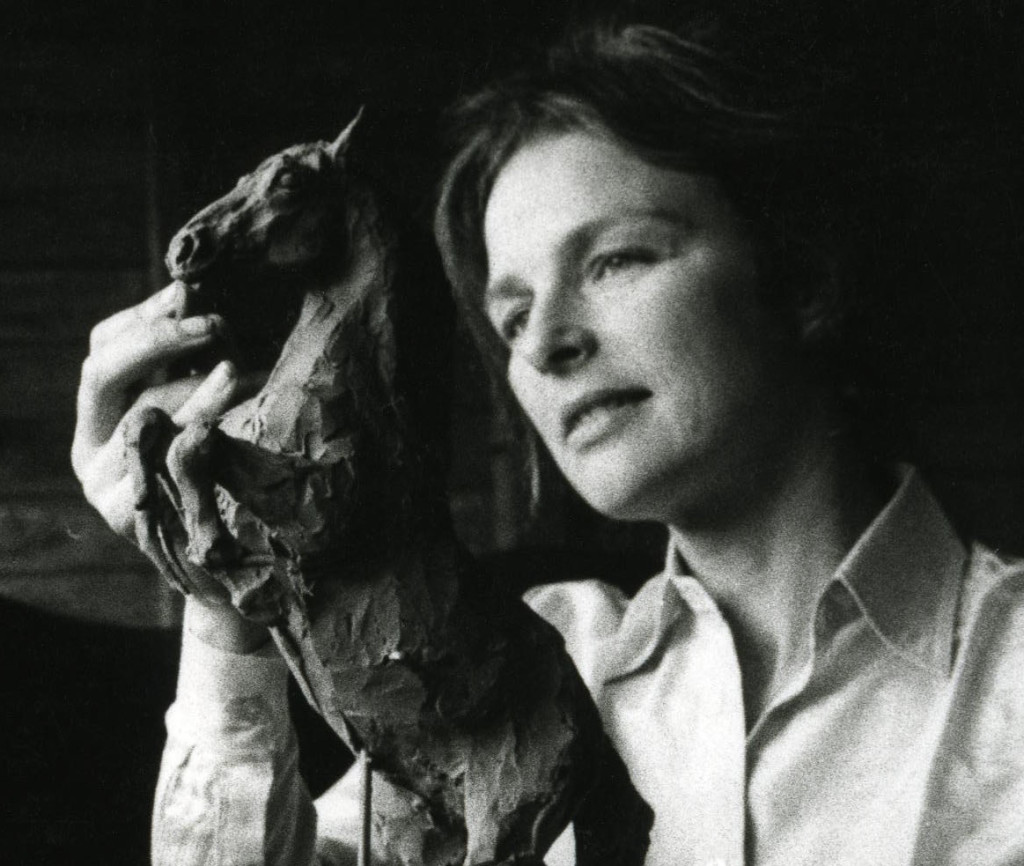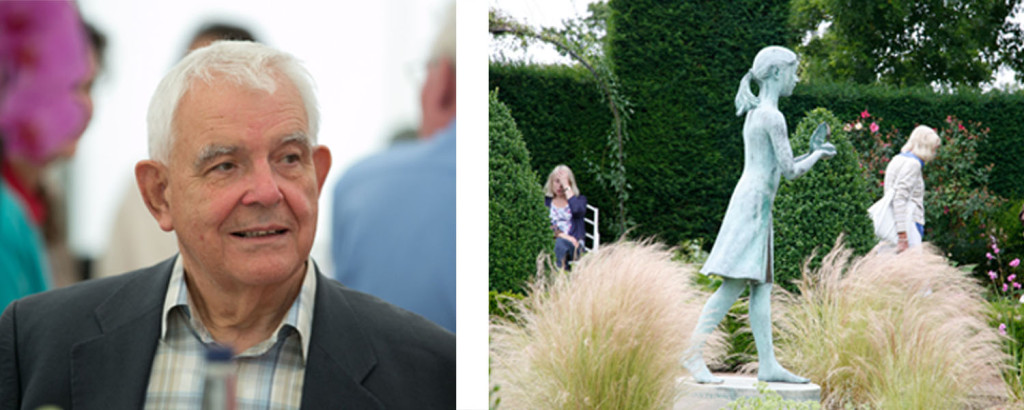How Art In Action Began

For four days each summer hundreds of artists and crafters come to Waterperry Gardens to work in full view of the public. Visitors can watch at close quarters and converse with the artists and crafters who will freely share their knowledge. It all seems so obvious now, but back in 1977 when Art inAction began, the idea was still new. So how did this wondrous show come about?
Art in Action was founded by Bernard Saunders. In an interview with the art critic Michael Shepherd in 1992, Bernard described how the event came into being. “There is no one reason why I inaugurated Art in Action,” he said. “It was a case of three reasons coming together in a flash. The first was that, as one who had worked with artists all my life, I knew just how difficult it was for artists to reach the right public for their work, and to sell it. The second reason was that I was looking after a country house and horticultural institute with a lovely sweep of grounds, flowers and grass, which did not get the full public use they deserved. The third reason was that, two years before, I had attended a craft demonstration at a famous London museum and gallery, at which the people beyond the front rows could not see the demonstration. I knew I could offer more time and space for demonstrators. I wanted to go for demonstrations by the finest of fine artists, painters and sculptors in particular, and make it an event of quality above all. I believe that the purpose of art is to uplift people.”
The notion that art is purposed with uplifting people was not fashionable in the 1970s when Art in Action began. It was the decade when traditional drawing was being banished from the art schools. Support for the idea of Art in Action came from the School of Economic Science, the owners of Waterperry House where Bernard was steward. He had been studying Advaita philosophy at the School for some years, a philosophy based upon the idea of oneness.
From the outset Art in Action struck a chord with the public, as Bernard explained, “The response from the public to Art in Action has been sometimes unexpected, and sometimes moving. They write letters praising the friendliness, the peacefulness, the organisation – surprising details like the way the car parking is handled, and the fact that there are clean toilets, and sometimes the effect has been very profound, like the family with a ‘problem teenager’ who after a day at Art in Action found a whole fresh start in their family relationships.” The letters still come – along with scribbled notes and emails – some with suggestions for improvements, others simply praising the art, the artists, and the event.
Rachel O’Dell demonstrated pate de verre casting at Art in Action for three consecutive years. Her sentiments echo those of many of the artists who have participated at Art in Action over the years, “The first time I exhibited I couldn’t believe the generosity. Art in Action has been the highlight of my year since I was first invited, and it has continued to give me the sense that what I do is worthwhile. The ethos of the event is to give value to the skills and efforts of makers. It showcases the handmade and celebrates the labour involved in creating unique pieces of art. Such a philosophy creates a supportive atmosphere where artists like myself can come together, share ideas and experiences, appreciate one another’s talents, and be inspired. Although it is a selling event it has a completely different feel to work being displayed in the often clinical environment of a gallery.”
Bernard said that at first it was not easy to persuade artists to come and work in public, and that the event was only intended to be a one-off, “I sat there on the first day wondering if anyone at all would come to it. We had 14,000 visitors the first year. We made a small profit which was ploughed back into the estate, the tents and people make quite a mark on the grounds.” Bernard’s focus on quality is an important factor in the success of the event, “The prime intention is always the quality of the art, and the demonstrator’s skill in meeting the public, not the amount of profit.”
Over the years Art in Action has been staffed by Bernard’s fellow students at the School of Economic Science who have turned out assiduously. But today anyone can volunteer to help at Art in Action as long as they are willing to engage in the spirit of the show and serve wholeheartedly. The art at Art in Action is uplifting and the spirited generosity of the helpers inspiring, and when a visitor has had their fill of looking around they can make their way to the beautiful gardens beside Waterperry House and sit and admire the long herbaceous border in full bloom and reflect on how wonderful life can be after all. Long may it continue.
Stephen Prendergast, April 2015. Pictures: Top, Lorne McKean sculpting at an early Art in Action; bottom left, Bernard Saunders at Art in Action 2013; bottom right, a sculpture in Waterperry Gardens by Nathan David. Picture credits: Top, Frank Monaco, bottom left, Nathan Gaydhani, bottom right, Ian Murray. This blog owes much to an article by the same author in the 2014 May/June edition of Craft&Design, and Art in Action is grateful to the publisher for their kind consent in using extracts from that piece. www.craftanddesign.net
